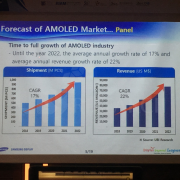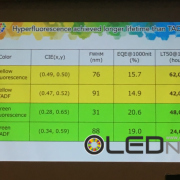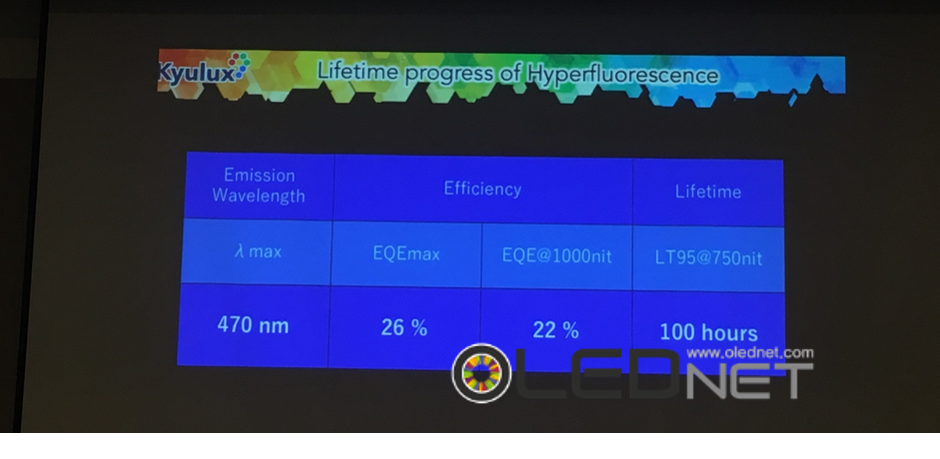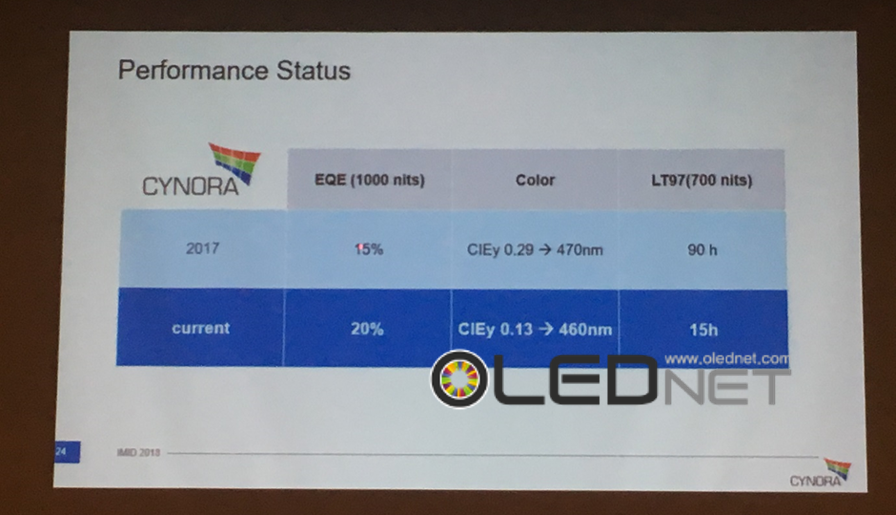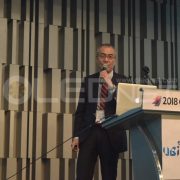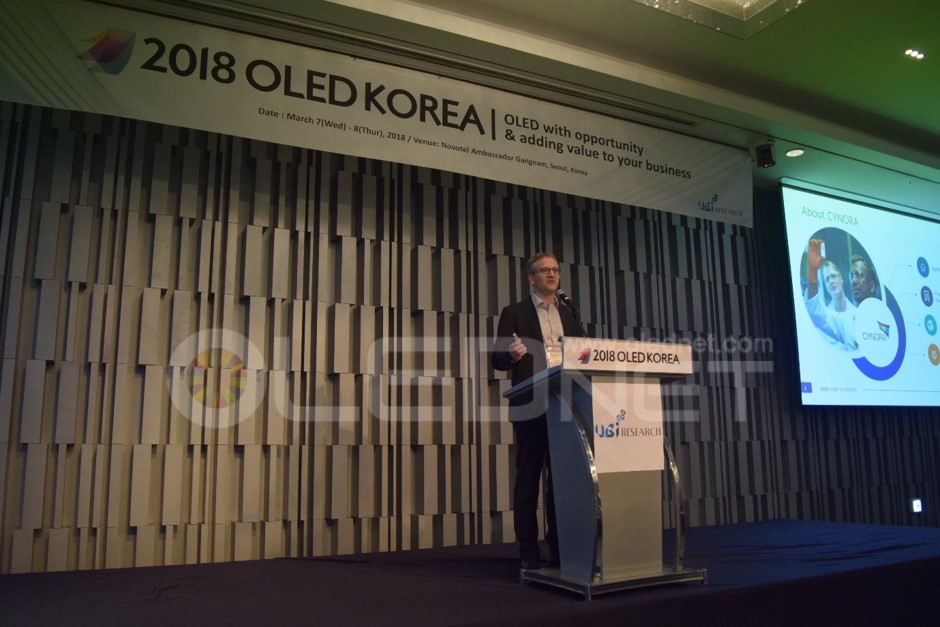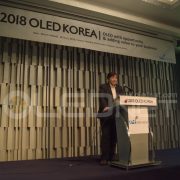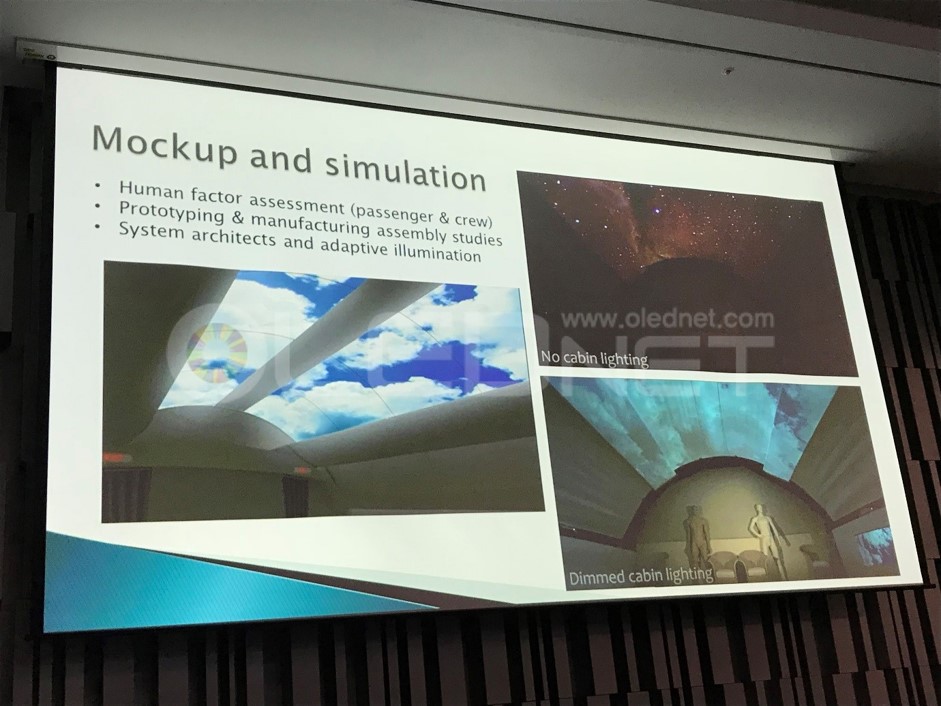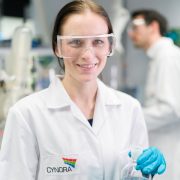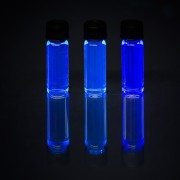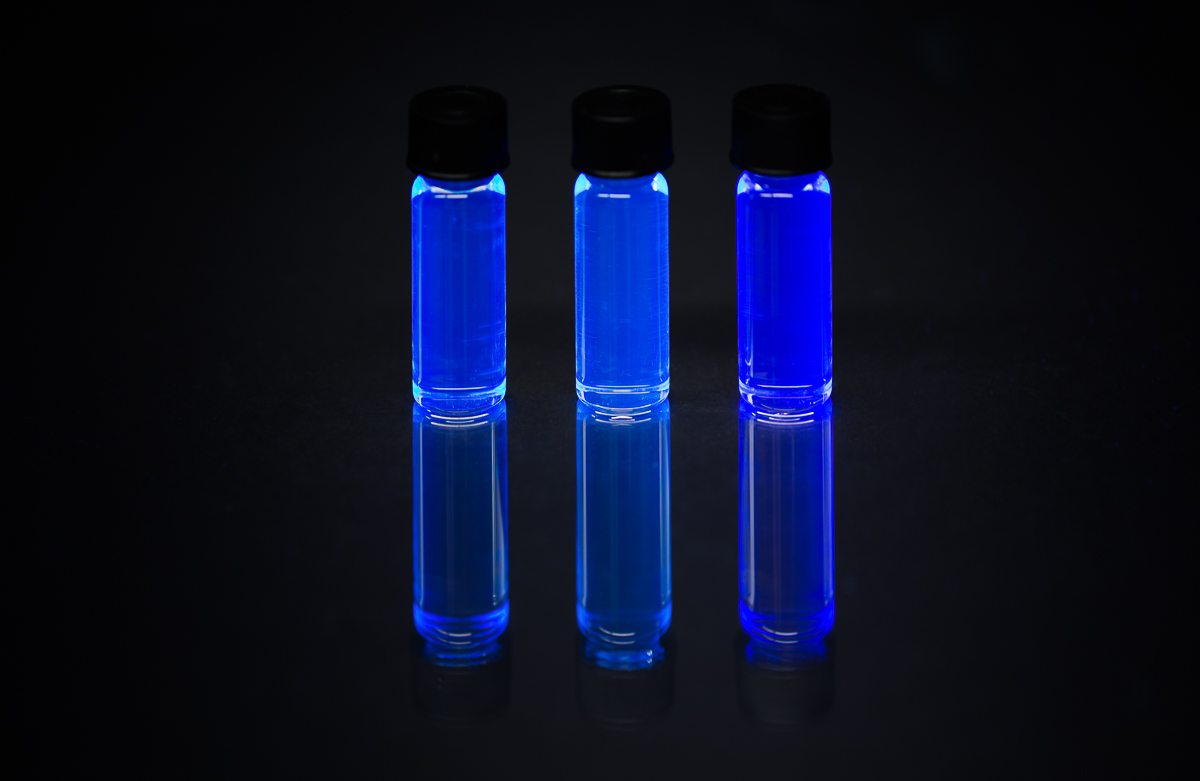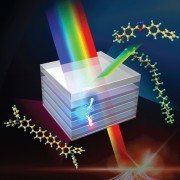[ICEL 2018] 차세대 발광재료로 주목 받는 TADF
모니터와 가상현실 기기에 이어 자동차에 사이드미러용 OLED의 적용 등, OLED가 스마트폰과 TV에서 벗어나 점점 그 영역을 확대해 나가고 있다. 다양한 환경에서 새로운 OLED application이 증가할수록 사용자들을 만족시키기 위한 기술 개발도 필수적이다.
제주국제컨벤션센터에서 10월 15일부터 진행되고 있는 ICEL 2018에서 다수의 연사자들은 OLED 시장이 점점 더 성장함에 따라 OLED의 성능을 개선하기 위한 재료 개발이 필수적이라 역설하였으며 그 대안이 될 재료로 TADF(Thermally Activated Delayed Fluorescence)를 언급하였다.
먼저, Samsung Display의 황석환 수석연구원은 OLED 패널과 재료 시장의 지속적인 성장을 언급하며 새로운 증착 공정용 발광 재료 중 하나로 TADF가 좋은 대안이 될 수 있음을 밝혔다.

황 수석연구원은 형광 청색의 효율은 현재 거의 포화 된 상태이기 때문에 TADF를 적용함으로써 이론적으로 100%의 발광효율을 얻을 수 있으며 값비싼 희토류 금속을 사용하지 않아도 된다는 점등을 장점으로 언급하였다. 이어서 실제 OLED에 적용되기 위해서는 재료의 안정성 향상과 Boron 재료 등을 활용한 색 순도 개선, 높은 triplet 에너지를 갖는 호스트 개발 등이 선행과제라 설명하였다.
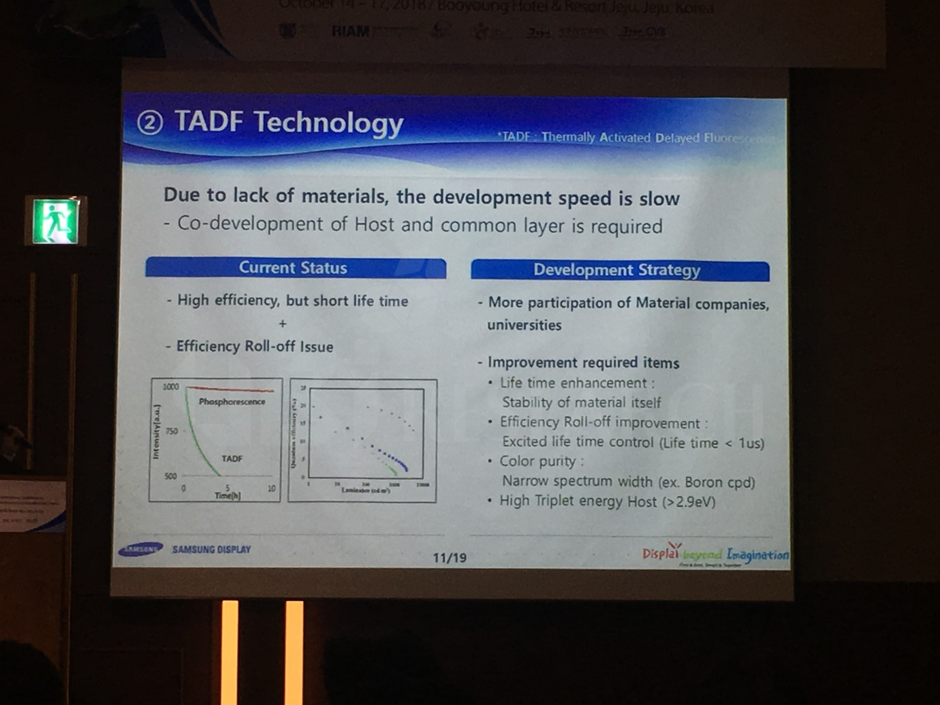
다음으로 TADF를 개발 하고 있는 대표적인 기업인 CYNORA는 현재까지 개발 된 진한 청색 TADF의 성능을 공개하였다.
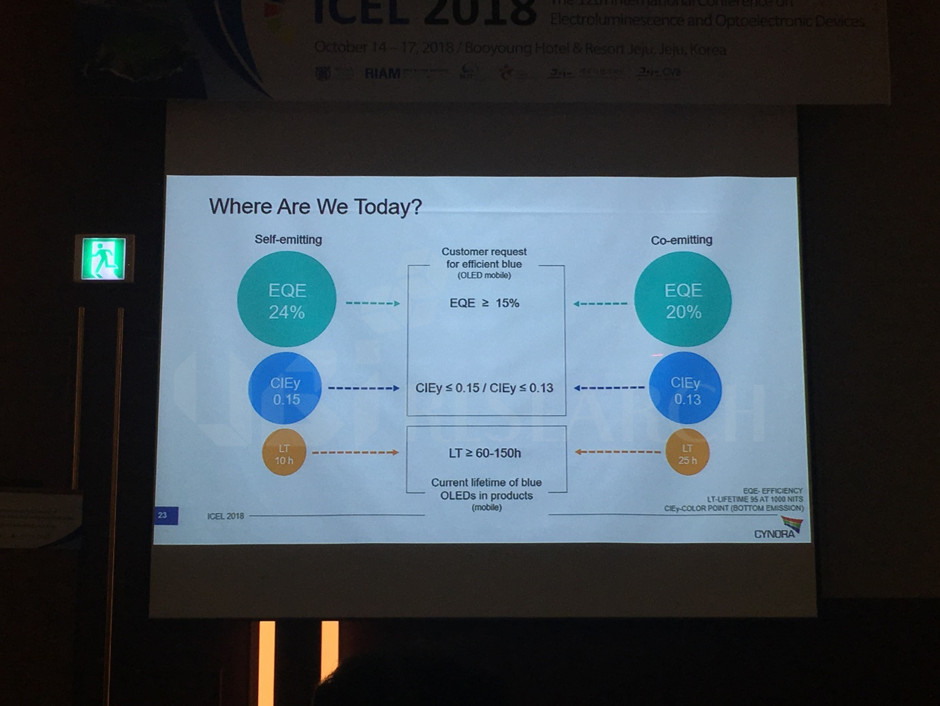
CYNORA는 진한 청색 TADF의 발광 효율과 색 순도가 업체들이 원하는 수준에 도달하였다며 현재 최종 목표로 수명 향상을 위한 기술 개발을 진행 중이다 라고 언급했다. 또한, 이러한 노하우를 바탕으로 녹색과 적색 TADF를 빠르게 개발 완료할 것이며 현재 녹색 TADF는 몇몇 고객사들에게 샘플로 납품했음을 밝혔다.
이 밖에, Merck도 TADF와 관련 된 포스터 발표를 진행하며 TADF가 형광 청색을 대체 할 수 있는 가장 강력한 발광재료임을 확인시켜 주었다. 청색 TADF가 OLED 시장에 빠르게 진입하여 OLED 성능을 한층 더 업그레이드 시킬 수 있을지 OLED 관련 업체들과 연구기관들의 이목이 집중되고 있다.

